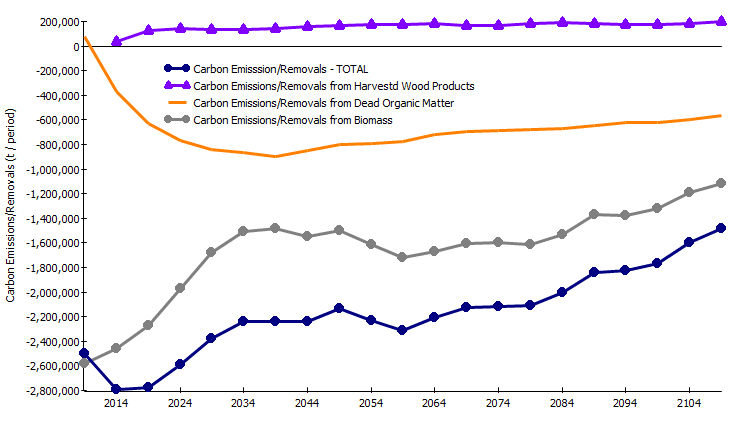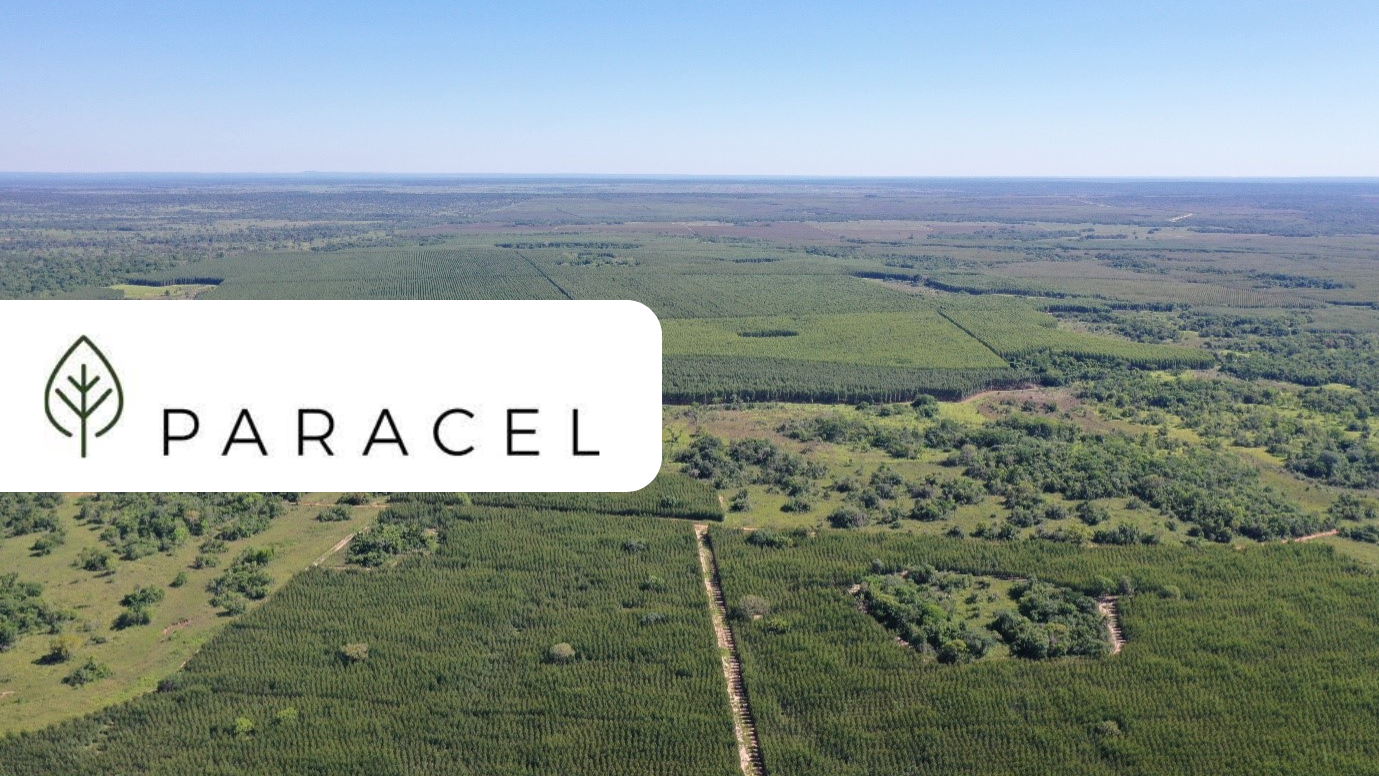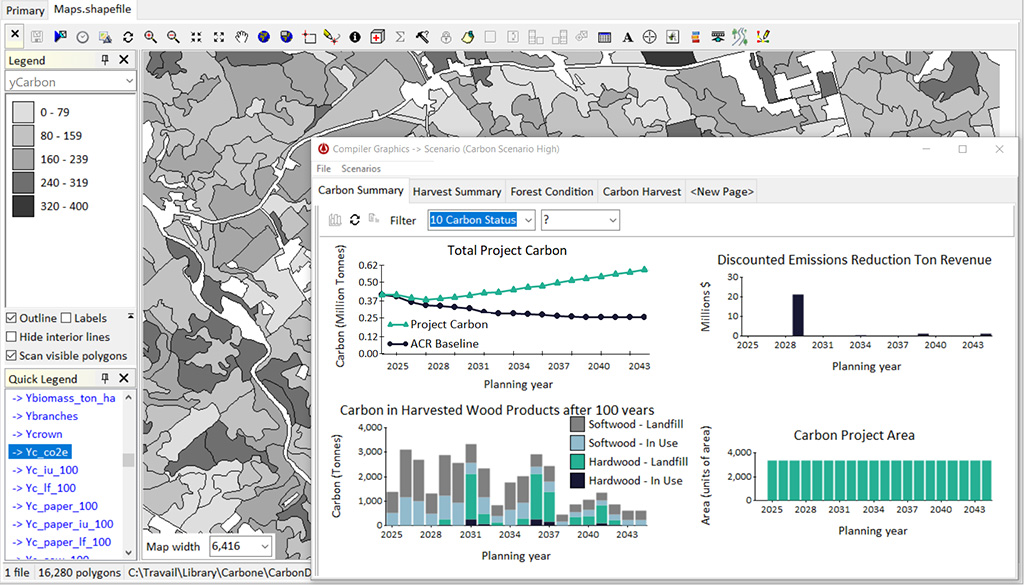‘Net Zero’ is an ambitious goal many countries, including Canada, have set themselves. Reaching Net Zero means balancing greenhouse gas (GHG) emissions with actions to remove an equal amount of GHG from the atmosphere. Under the Paris Agreement, an international treaty on climate change, signatory countries set goals to reduce their emissions at the national scale. Many countries have committed to and are moving toward net-zero emissions by 2050. Some individual companies are going beyond Net Zero and committing to ‘Net Negative’ or ‘Carbon Negative,’ promising to take actions to remove more GHG from the atmosphere than they produce.
There are many ways to remove carbon from the atmosphere, but the first and perhaps most obvious solution that jumps to mind is planting and protecting trees. Plants remove carbon dioxide, the dominant GHG in our atmosphere, through photosynthesis, sequestering carbon as they grow and storing it as biomass above and below the ground. Forests can be carbon sinks, storing away carbon for the life of the plants within them and sometimes beyond, depending on the use.
Forestry, an industry in the business of planting, managing and harvesting trees, plays a key role. However, reaching net zero is far more complex than planting and counting individual trees. Every decision we make at every scale has consequences and trade-offs.
Carbon Complexity
Specialist carbon modelers like James Steenberg do the complex carbon calculations behind these decisions. In his role as a forest carbon and climate change analyst with the Nova Scotia Department of Lands and Forestry, James calculates and models the path of carbon into the forest, through the forest and back into the atmosphere.
“It’s not as simple as counting how many trees and adding up how much carbon each tree removes from the atmosphere through photosynthesis,” James explains, “It’s critical to understand the carbon with a full lifecycle approach.”
The biggest challenge is the sheer scale of forest carbon and knowing how to include the less tangible sources and sinks of carbon in the forest in calculations. James talks about three ‘pools’ of carbon in the forest. The first two pools are living biomass, the trees themselves, and harvested wood products, including lumber, pulp and energy products. But the third, less apparent but significant pool is the carbon stored in the dead organic matter, including the soil. There is more carbon in the soil than there is in all the forests.

“One percent of the soil carbon in Nova Scotia’s forests is equivalent to, roughly, the total emissions from the entire economy of Nova Scotia on an annual basis,” says James, “So you can see how it’s important to not just manage that carbon but also to understand how it’s modeled and the assumptions around that.”
Assumptions
James’ role at NS Department of Lands and Forestry is relatively new, driven by an increasing need to address carbon and climate change in forestry. A crucial part of this role is building models of different climate and management scenarios to inform policies and decisions to administer forests and lands in NS. The overarching goal is to manage forests in a way that improves their ability to fight climate change.
Over the past 150 years, various factors have driven decisions in forest management at different times. At first, the focus was on yield and access: where is it and how much. Then came an increasing desire to balance yield with the socio-economic needs of communities and people working in the sector. Then, the push in the past few decades has been toward balancing these other drivers with biodiversity.
“More recently, we realized that we need to add another forest value, and that’s carbon,” said James. “We need to be considering it at all points and understanding synergies between forestry and carbon and its role in climate and mitigating climate change.”
Models
To do this, James builds carbon budget models for forests and forest products that bring together all the assumptions and equations from previous studies to understand how carbon moves through forests at different scales. Using Remsoft’s Woodstock optimization technology, James can go beyond measuring carbon and examine the trade-offs between carbon storage and other ecological and socio-economic indicators.
Another key requirement is tracking and recording the many assumptions that go into forest carbon models, from how metrics are measured to what indicator is used and how it is modeled forward under different management scenarios.
“More often than not, those assumptions are the critical pieces when you’re bringing in a new policy,” says James, “Those assumptions can be more influential than anything you’re doing in the woods, in terms of their impact on long term trends in forest carbon.”
NS Department of Lands and Forestry uses Natural Resources Canada’s Carbon Budget Model of the Canadian Forest Sector (CBM-CFS3), a framework to simulate the dynamics of all the carbon stocks identified as necessary by the United National Framework Convention on Climate Change and aligns with carbon accounting guidelines provided by the IPCC. The model uses much of the same information that is required for forest management planning activities (e.g., forest inventory, growth and yield curves, natural and human-induced disturbance information, forest management schedule, and land-use change information), supplemented with information from national ecological parameter databases.
“We’re fortunate that the Canadian Forest Service is one of the leaders internationally in accounting for forest carbon,” says James.
The CBM-CFS3 model uses much the same information as is required for forest management planning (e.g., forest inventory, tree species, growth and yield curves, natural and human-induced disturbance information, forest harvest schedule and land-use change information), supplemented with information from national ecological parameter databases.
Optimization
The challenge, says James, is working with the enormous volumes of data and incorporating all the available data into the forest carbon models. Nova Scotia, for example, has permanent sample plots that date back to 1965, generating years of valuable data used to build base natural yields for modeling, combined with new yield and inventory data. In addition to this forestry data, James’ role is to build carbon emissions, removals and sinks into these models.
“We use Remsoft software to create the outputs and indicator needles to track not just how much carbon is in these big pools, but also the emissions of carbon from the forest, the net removal of carbon from the atmosphere and the total net balance,” says James.
Building the models is just the first step. With Remsoft’s Woodstock technology, James connects to CBM-CFS3 and other carbon models through dynamic link libraries and can build carbon constraints into optimization models and make adjustments to maximize the sustainable harvest level, considering biodiversity, policy and legal constraints, and ensuring the forest is a net sink of carbon.
“But we want to go further than that,” James says, “By building carbon into objectives and constraints in the optimization, we can maximize both the removals of carbon in the forest and at the same time we’re maximizing sustainable harvest levels with all our biodiversity, legal, policy and wildlife constraints.”
The goal is to understand and maximize the net removal of carbon at the ecosystem level, rather than only focusing on the sequestration of carbon by trees from the atmosphere. This means looking beyond carbon sequestration to include the dead organic matter in soils and consideration of the uses and forest products.
However, there are trade-offs: a modification to forest management practices that is better for carbon might have impacts on biodiversity and conservation or on fibre production and harvest levels. Remsoft Woodstock can make slight modifications to individual factors and model how these changes will influence other factors, particularly as they may be amplified across large land bases and across long time horizons.
“It’s key to understand those nuances,” says James. In recent modeling, James has included climate change vulnerability indicators around the shifting ranges of tree species as the climate changes, attempting to balance the preference for tree species that may be better suited to climate but are less favourable ecologically or economically.
“We’ve included that in the optimization, and there are some direct trade-offs between reducing climate vulnerability and maximizing the carbon sink in Nova Scotia,” says James.
LEARN MORE:
-
Find out how you can manage carbon project complexity and reduce risk with optimization modeling.
-
Read how Strategic Planning Optimization can help you balance different goals for the land base to maximize the present and future value of forest resources.



